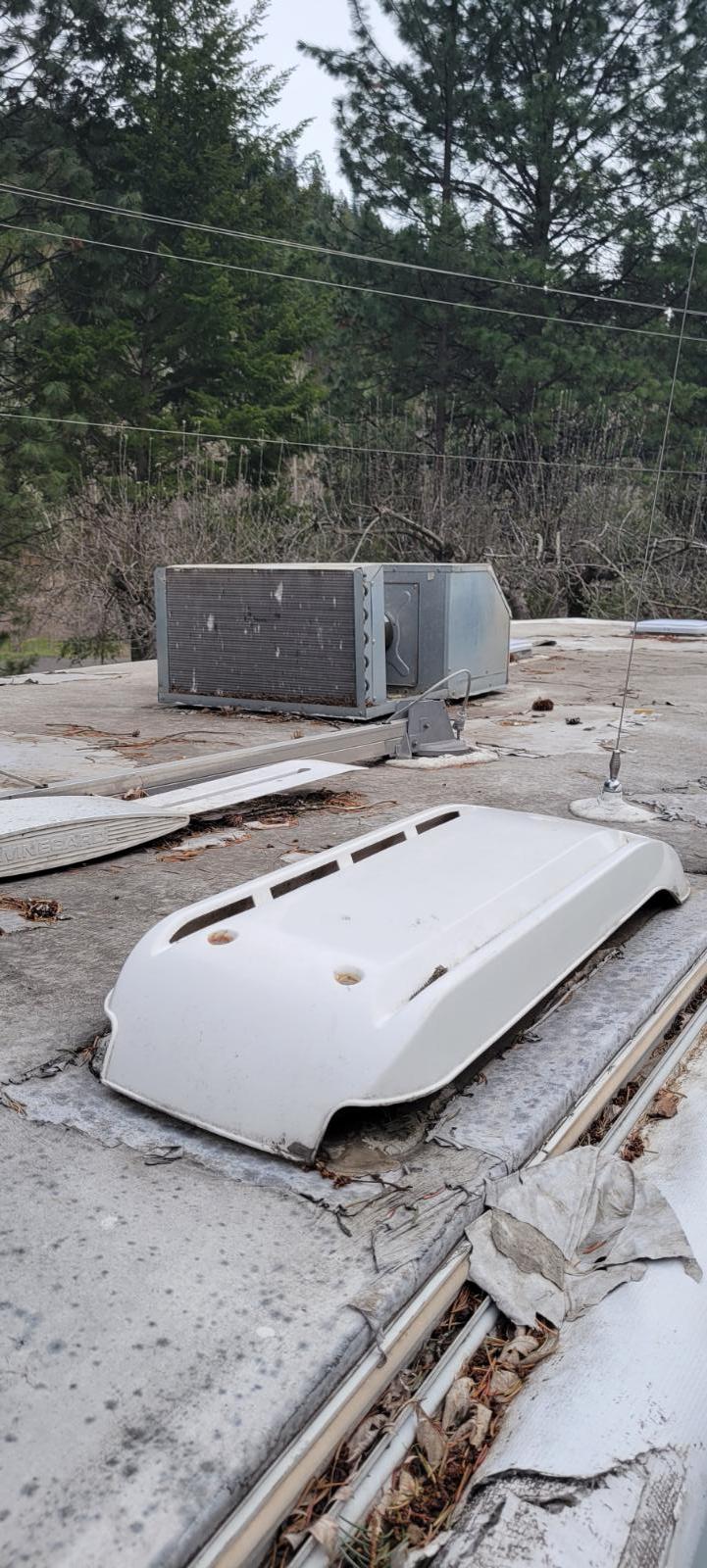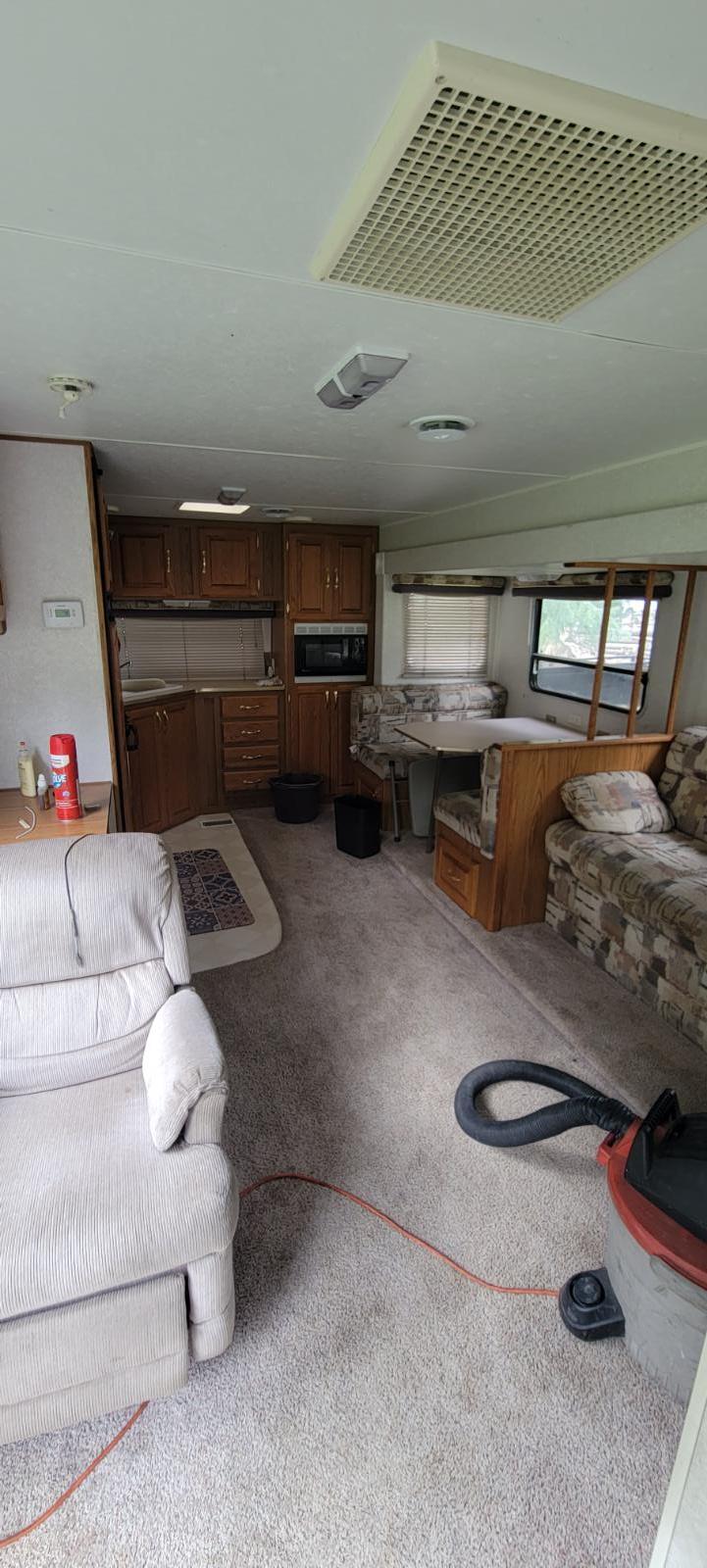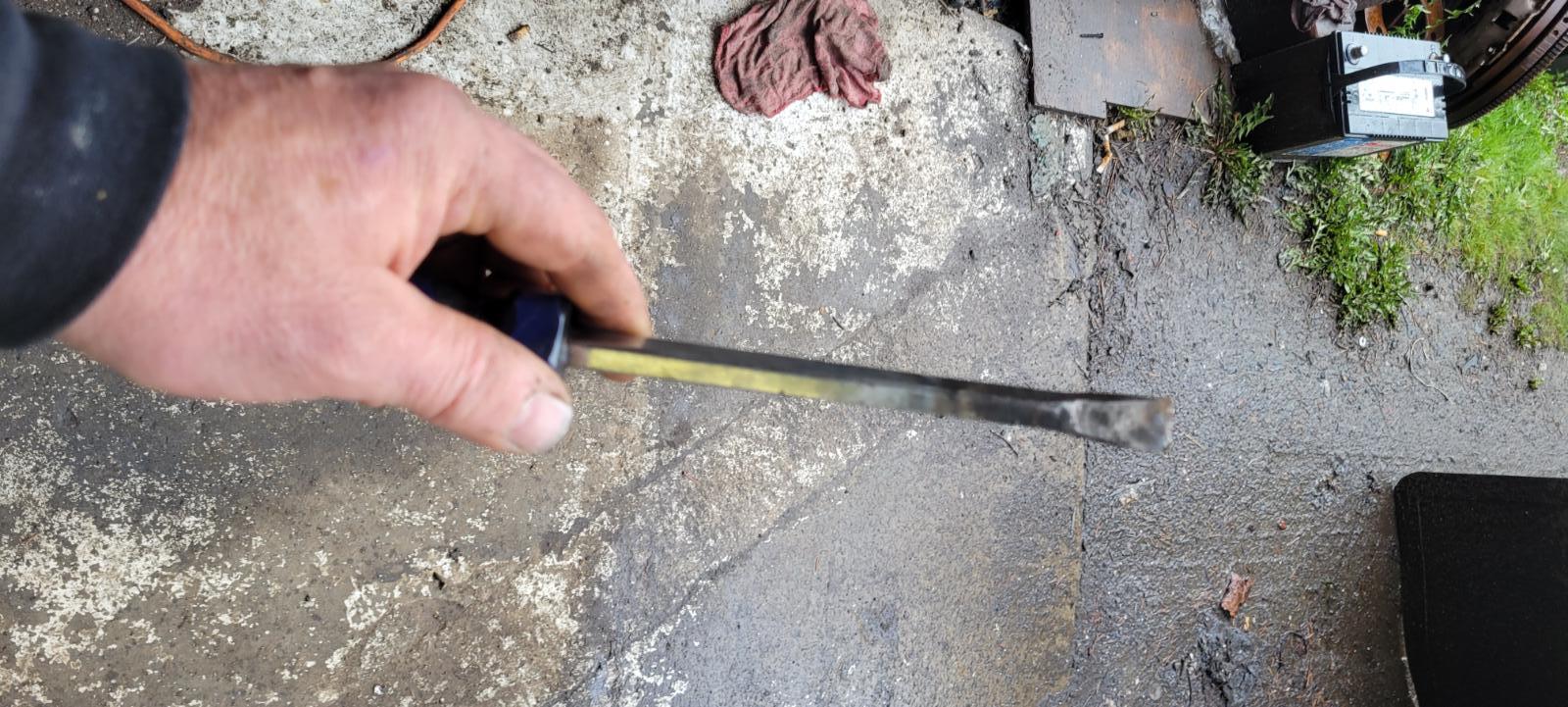
Everything posted by Mopar1973Man
-
Midna's build
Using the Quadzilla for a boost gauge isn't a really good idea. Even mine is skewed but on the upper end more so than the starting edge. At 47 PSI on the ISSPro it was reporting 69 PSI in the logs. I can see why you want to get better on the lower end because it impact when your power comes on. Personally it good to use the gauge to check for MAP sensor performance be be aware I doubt you'll get it accurate over the entire span. Yeah I would look at getting a new MAP sensor. I not going to suggest Cummins OE sensor either. More I keep digging the more I find that Cummins actually doesn't produce. (Head Gaskets, Thermostats, etc.) but you pay higher price for junk parts.
-
Semiannual Sierra Nevada camping
Still working at getting packed up. Yeah got the A/C cover pulled and its shattered pretty good. Got the carpet shampooed, and started wiping down everything in the RV. I'm still on track to getting out in the morning I'm going to start calling about the A/C cover and bearings. Yeah don't look at the crappy Dicor topping that is peeling up. I'm not going to listen to RV specialist anymore about, "Oh it gotta be Dicor coating or you'll ruin the rubber" which is BS. I'll snow roof it this summer.
-
Angry & can't do it anymore, serious iQuad timing issues
Test the injectors... If you wanna do a compression test while the injectors are out you can verify the cylinder health. Worth it to know what the health of the cylinder and piston. I just a member call me about his truck and the amount of blow by and losing the tappet gasket. After doing the compression test he was low on 5 and 6 (funny the too hottest cylinders). So he's into doing a full rebuild. Sad to say...
-
Midna's build
I would consider pulling those injectors and having them pop tested. +50HP injectors shouldn't really smoke at all, remember as pop pressure falls the flow rate will increase, timing is advanced, fuel spray has bigger droplets. I'm smoke free with +150HP injectors but popped at 320 bar, even currently I'm back down to near 310 bar just judging idle engine load. So new it idled at 13 to 14%, then now it idles at 6 to 7%. Yes it's possible to lose 10 bar worth of pop pressure in the first 20k to 30k miles, I've seen it happen to a few members. Doesn't matter who builds the injectors. Just remember the lower limit is 293 bar according to the Dodge FSM.
-
Angry & can't do it anymore, serious iQuad timing issues
+50HP should be popped at 310 bar. If your doing +150HP I would pop 320 bar.
-
Intermittent Surging and ECT
Now put some miles on it. Verify it doing good.
-
Semiannual Sierra Nevada camping
Well I've got water system primed. Now to do some cleaning and repairs. I got brakes fixed on Beast. I'm on track to going on this trip.
-
Big Shout Out To Mr. Mike "Mopar Man"!
@First Diesel Middleton shout back to see if you made it to your destination?
-
New comp build
I'll admit I need a video card. But have no idea what is better Nvidia or ATI. Then add the Linux angle with typically isn't a problem but some times drivers can be an issue.
-
Thinking out loud...
This morning I've gotta run go get the brake line. Then run up the mountain fire up the water for the year. Then come back and install the brake line and bleed the system. Finish up the RV and get it all ready. I still got to plan a trip to ontario of my A/C cover on the RV.
-
Thinking out loud...
Here you go... Beast is in the shop brake line removed off the front passenger brake caliper. NAPA screwed up and gave me the wrong brake line. This is on hold for another day. As for the RV I got out there fired up the furnace and started cleaning the RV up I've got to clean the carpets fast. Wash counter tops and bathroom. I'm stepping up to get this show going and ready.
-
Thinking out loud...
... As I'm down here chatting with Mark my renter I'm getting a game plan today for getting Beast fixed up, cleaned up and ready to haul the RV. Ok I'm going to let another cat out of the bag. I'll be the first Cummins Forum that is filing a LLC as a private owner. Yup I've got big plans for the website but gotta be patient as the paper work is filed. Soon as I get the paperwork stating it filed we will be... Mopar1973Man.Com LLC Yes there is plans to get the store back up soon. Again I've gotta be patient for software to become available. Switching back... im going to get working for my trip. @JAG1 and @IBMobile are not going to let me stay home.
-
Thinking out loud...
Yeah I've focused here since 2004 when my step father passed away (RIP Dad). I couldn't just walk away from my Mom and leave her trying to manage this place on her own. Like I've got NewsMax on and listening how Biden is driving inflation right along. Just makes me sick every time I just try to look forward to get out there is always something going to foul up my goals, screw it I'm just going.
-
Thinking out loud...
I am starting to realize I'm not the young puppy anymore. My last project was a 1996 Chevy 1500 4WD for ball joints, tie-rod ends both inner and outer, and idler arm and pitman arm. After the beating I took on this job my physical body can't do this everyday. I'm going to go back what I enjoy more, website work, phone support and working on Cummins trucks. Even that I'm going to be selective of what I'm willing to do. Not to mention all these years I was busy taking care of Mopar Mom (RIP Feb. 2020) now I'm free to do as I wish. My focus is getting my RV ready and Beast ready for a run out to Mono Village with @JAG1 and @IBMobile which have been doing this trip for years. No more, if i gotta get a loan im going on this trip. Ive not had a vacation it quite awhile. I want to be able to travel beyond Boise - Lewiston realm. My life isn't just about my job and grocery shopping. I wanna leave Idaho and go see other states and friend off the web site. Yeah I know I've got lots of things here needing to get done. I've got stuff of both my parents I've got get sold or donated. I've got home repairs to do as well as upgrades I've got planned. Just been a rough patch between Mopar Mom passing, then COVID, then Russian War, and fuel prices going sky high. Everything has been keeping here just working, sad part is I end up working my weekends most times. Yup, I'm working myself to to death. Like as I lay here in bed typing this I can feel the soreness in my hip and lower back.
-
Own a bike? Post a pic, let's get started
Even the Goldwing I've got under my deck isn't too bad its very economy being the last MPG numbers was like 50 to 52 MPG. Just if the overheating issue could be resolved I would ride it again. I missed the summer days darting into town and back actually quite relaxing to do. Cranking out to tunes and hauling down the pavement.
-
Map and AIT
No need to clean either sensor makes zero difference in the operation. Being I've got a Quadzilla tuner I can watch both the ECT and IAT at start up and if they match the IAT is working fine. As for the MAP sensor its not accurate by any means below 20-25 PSI its good but above that the number skews quite a bit being I supposedly maxed out at 69 PSI of boost even when my max is 45 PSI back with the HX35/40 Hybrid. Hence why the old article is gone because it makes zero difference if the IAT is oily or not.
-
Squirrels Got Me Good
-
Squirrels Got Me Good
Just another thought is contacting a pest control company and maybe they have something that will work better. Possibly relocate you problem animal.
-
Squirrels Got Me Good
One of the down sides to the circuit breaker because of the high current flow during jump starting its possible to trip the 150A breaker. Normal operation of the truck typically it will not trip.
-
Own a bike? Post a pic, let's get started
Hmmm. I've got a list of motorcycles I've owned at some point. Today really I'm not interested in the past technology being it was very basic. Today's technology in motorcycles is much improved but the style of bike I would ride isn't produced. Not much for racing styles or wanna be Harleys. I miss my V45 Honda, kind of a blend of daily driver but sporty.
-
1983 Goldwing GL1100
Both head were done for surfacing and valve seals. New cam belt and timing is dead one on the cams. Radiator was rodded out and like new. New water pump. Carburetors rebuilt. Ignition timing is electronic no adjustments in the base plate (rear of engine). Check timing with a timing light and it in time. Still tips the coolant gauge at 240°F on 50°F day. I've got autometer gauge set hooked up. Now at 32°F outside it will stay about 200°F. I've not fired this up in years.
-
Semiannual Sierra Nevada camping
I've got a few tasks to complete. I've got to clear the yard of all my standing jobs. Then get the RV wheel bearings replaced and packed with grease. I've got a brake hose for Beast and got to flush the brake system. Beyond that I should be good to pack up and roll south.
-
Holy crap moment!
Nope. I just use a mayo jar and bleed them that way no need for the ABS pump and never had any issues using my method on any vehicle yet.
-
Thoughts?
Actually I love my older truck now. Easy to repair and wouldn't want a new truck. Just a bigger target for thieves. Being the older truck with a few body issues most don't want to mess with it. Something new looking and fresh it will be a target fast.
-
Angry & can't do it anymore, serious iQuad timing issues
If there is no wire tap then that whole section is not used. Another thing level 0, 1, 2, and 3 are not using wire tap section either.









